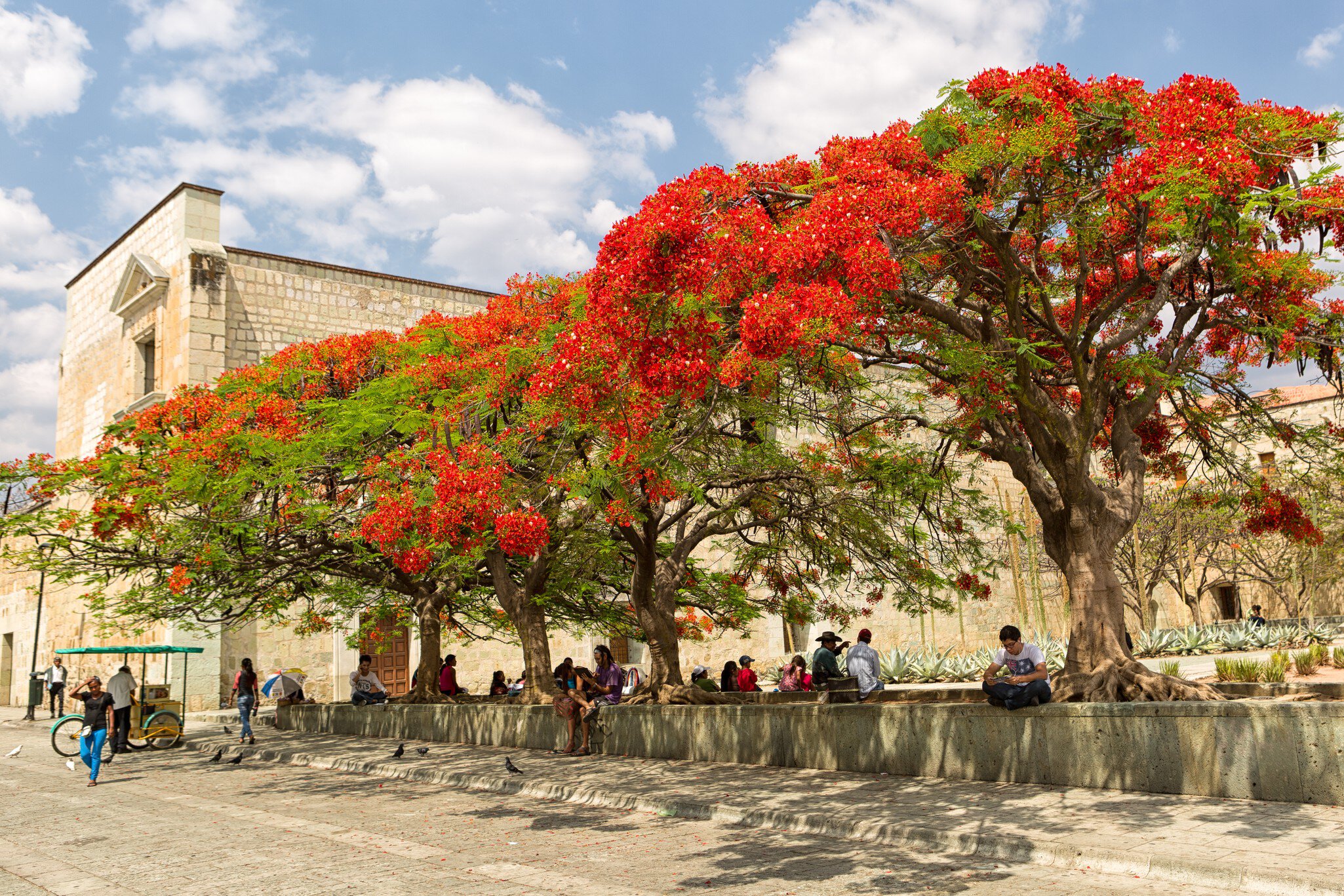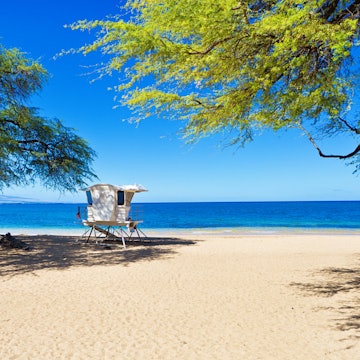
A guide to Veracruz, Mexico



The Veracruz Cathedral in the main plaza of Veracruz, Mexico. TLF Images/Shutterstock
Somewhat under the radar, the state of Veracruz enjoys a lush, tropical climate and has a decidedly languid, unhurried feel. With more than 720km of coastline, towering mountains, jungle rivers and wildlifeтrich lagoons, Veracruz boasts incredible natural diversity. Underrated and infrequently visited, itтs best explored at a leisurely pace, taking your time to visit remote sandy bays, rewarding ruins and lowтkey, cultured towns т not to mention Mexicoтs coffee capital of Coatepec.
Bombastic sights may be lacking, but in some ways this is a strength, with fewer crowds to contend with and incredibly welcoming locals. It was here that the Spanish conquest of the Aztecs began and where a succession of Mesoamerican cultures, from the Olmec onward, thrived and flourished. Archaeological highlights include the niched pyramids of El TajУn and the spectacularly situated Totonac site of ВЯГмОБВЙГѓГмОБГњГйБєУЁВд, fringed by rainforest, overlooked by towering limestone peaks and located high above the Gulf coast.
Historic, bustling Veracruz City is the countryтs busiest port and the state's largest city т but not its capital; that's Xalapa, around 100km northeast of the seaside city. Lively Veracruz City has an intoxicating traditional dance scene, with couples strutting their stuяЌ every weekend in the main plaza. Xalapa, meanwhile, has a rich cultural life thanks to its large student population. Its attractive centro (downtown) is well worth exploring with its indie bookstores, quality coffee joints and buzzing nightlife.
Encircling the city of Xalapa is a delightful meld of coяЌee plantations and cobbled villages, including Xico and Coatepec. Further inland, Mexicoтs highest mountain т snowcapped Pico de Orizaba т beckons, within reach of the appealing town of Orizaba. Down south, sultry Laguna Catemaco and the entice with lush vegetation and dreamy waterfalls.

When should I go to Veracruz?
The best time to visit is during the dry season (December to May), though peak tourist season for non-Mexicans begins in November, as temperatures rise and rains decrease. November is when Veracruz also celebrates the dead by building ofrendas (altars) and visiting cemeteries on DУa de Muertos. Papantla hosts an impressive Festival de Vainilla in December with Indigenous dances, gastronomic delights and all kinds of vanilla products on sale. Christmas celebrations are huge across the state, as well.
Carnaval is an amazing time to experience Veracruz City, with wild celebrations. February kicks off this biggest party on Mexicoтs eastern coast, with parades of costumed dancers, fireworks, music and folklore shows. Jarochos (residents of Veracruz) flock to the ГњУГГІВЙБєДЧ (main public square) for live bands.
If you want to celebrate Earthтs reawakening, come for the spring equinox, commemorated with traditional Totonac dances as the first rays of sunlight hit the pyramids of El TajУn. Be sure to book accommodations well ahead in nearby Papantla.

How much time should I spend in Veracruz?
Distances are short in Veracruz, and it takes only 2 hours to get from the beach to the highlands. You can easily roam historic towns, wander coffee plantations and hike in highland forests all in 1 week.
For shorter trips, consider staying close to Veracruz City center and exploring its sites and the beaches close by. If you have more time, venture out to smaller towns along the coast and inland to visit historical sites, including Aztec ruins and stone creations by the Olmec, the earliest Mesoamerican civilization, renowned for sculpting giant humanoid heads from basalt rock.

Is it easy to get in and around Veracruz?
Geographically, Veracruz City makes the perfect spot to explore ancient ruins and beaches to the north and historic towns down south. The city has a small international airport, 9km southwest of the center with frequent flights to Mexico City, Monterrey, АфВЙВдГІУКВд, Dallas and Houston. Thereтs no bus service from the airport to the city, but official taxis cost (M$) to downtown.
At the main transport terminals, taxi prices are fixed, and youтre assigned a driver from an official taxi office with good security for passengers. Elsewhere, youтre on your own and have to agree on a price. Most drivers are fair, but some overcharging occurs so prepare to bargain.
Veracruz is a central bus hub, with good services up and down the coast and inland. links all the major towns in Veracruz with comfortable, air-conditioned buses. Minibuses and colectivos (shared taxis) connect the towns with villages. In remote areas with rough roads, piratas (pickup trucks) function as buses.
Renting a car is a good option as well, and youтll find car rental agencies like Hertz and Europcar at Veracruz airport. Roads are in fairly good condition overall, except for giant potholes and mountainous speed bumps. Hwy 180 connects the coastal cities from Veracruz City to Papantla, but itтs (mainly) a single-lane road and traffic can build up.
Veracruzт city center is easy to navigate on foot. Most sights are close together and streets around the ГњУГГІВЙБєДЧ are pedestrianized. The bus station is 3km south of the ГњУГГІВЙБєДЧ. Any bus marked Mocambo-Boca del RiЬo from the corner of Avenida Zaragoza and Arista goes to Playa Mocambo (20 minutes) and on to Boca del RiЬo (30 minutes). For the San Juan de UlУКa fort, get a tram from the Mercado de ArtesanУas or a boat from the dock behind the Torre de Pemex building.


Top things to do in Veracruz
Explore maritime history in lively Veracruz City
Giant cargo ships tower over the harborside here and a huge naval base dominates both the port and cityтs economy. For visitors, thereтs plenty to admire however. Head straight for Veracruz Cityтs historic core т its ГњУГГІВЙБєДЧ a captivating clash of beautifully restored Spanish architectural gems and once-imposing edifices.
Take a deep dive into Veracruzт maritime history at the Museo HistУГrico Naval, then walk to the harborfront for a lechero (milky coffee) at the emblematic . Continue along the waterfront past the lighthouse, Faro Carranza, and then down the ГОВЙБєБ№ГІУГВд (waterfront promenade), passing by piers, seafood shacks and cove beaches. Return to the ГњУГГІВЙБєДЧ in the evening and youтll experience Veracruz at its liveliest, particularly on weekends, when hundreds of dancers gather here to groove to live bands in the sultry night air.

Splash around the Gulf Coast
While Veracruz has managed to remain under the radar for foreign travelers, its beaches are a magnet for Mexican holidaymakers. As you veer further south of the Veracruz city center, youтll find reasonably pleasant stretches of beach all the way to Boca del RiЬo about 12km south. As a rule of thumb, the further from the oil rigs, the better the beaches. Alternatively, you can catch lanchas (motorboats) by the aquarium to the outlying islands for (usually) clear water.
A popular spot is Cancuncito, a sandbar off the coast that is sometimes submerged. Rent snorkeling gear to explore the underwater world here. Most boat tours will whisk you past Isla de Sacrificios, an island once used for Totonac human sacrifice and later as a leper colony. Itтs now part of a protected marine reserve called , and boats no longer land here.
South of Veracruz, the neighboring town of Boca del RУo has an inviting stretch of sand with shallow waters and small ripples suitable for young kids. In recent years the area has been revived with glass-walled skyscrapers and modern buildings, including the , a futuristic concert hall. A smattering of brightly colored seafood restaurants overlooks the mouth of the RУo Jamapa on Blvr Camacho; one of the best is . Lanchas offering boat tours to mangrove forests leave from here.

See Mesoamericaтs best preserved pre-Hispanic city
The ancient city of El TajУn is one of the best preserved and most important pre-Hispanic cities in Mesoamerica. Its pyramids and temples burst off a plain surrounded by low, lush hills 10km west of Papantla. Wonderfully evocative, it is an impressive reminder of the Classic Veracruz civilization and is a .
El TajУnтs most emblematic structure, the perfectly proportioned 18m-tall PirУЁmide de los Nichos (Pyramid of the Niches), is what makes El TajУn so special. The six lower levels of the pyramid contain rows of small square niches, believed to symbolize day and night and life and death in a universe of dualities. Archaeologists believe that there were originally 365 niches, hinting that the building may have been used as a calendar. In its heyday, it was painted red with black niches.
Youтll need at least a couple of hours to take in all the highlights. Thereтs little shade and it can get blazingly hot, so bring a hat and water. The spring equinox is a particularly good time to visit, marked with Totonac dances at dawn.

Observe a river of raptors
The state of Veracruz hosts one of the largest migrations of birds on Earth, and each fall, millions of raptors pass southbound over the pinched coastal plain between the Sierra Madre Oriental and the Gulf of Mexico. Sitting under this , the little town of Chichicaxtle is perfectly positioned for viewing this astonishing spectacle. At the you can learn all about this epic migration, roughly happening between late August and late November, as an estimated 4т6 million birds of prey head southward.
Depending on the month, the species of raptor that you can observe differs. Between late August and mid-September, Mississippi kites are most common, while in October, itтs broad-winged hawks. Other raptors encountered include ospreys, peregrines, kestrels and merlins. You might also spot migrating songbirds, but not in such great numbers (they tend to fly at night, probably to avoid predators). The best time of day, when the greatest concentration of raptors fills the sky, is late morning and late afternoon.
The observatory is run by , a leading Mexican conservation organization. Inside the center is a gift shop selling shirts, hats and birding books, while the upper level is for bird spotting. You can borrow binoculars. To get here, take a bus from Veracruz City to Cardel (1 hour) and then hop on another to Chichicaxtle (15 minutes).


Steep yourself in all things coffee
Cradled in the foothills of the Sierra Madre, the mountain town of Coatepec т a mere 15km south of Xalapa т boldly lays claim to the title of Mexicoтs coffee capital. The minute you step off the bus and inhale, it becomes instantly clear that theyтre not joking; you canтt walk more than a few paces without encountering a roastery, cafe or gourmet coffee store. The town also hosts an each May.
To learn about the different techniques of coffee roasting and brewing, head straight to the . Converted from a 200-year-old botica (apothecary), this chic boutique coffee house has a small museum that you can visit on a guided 2-hour tour (M$75). The incredibly knowledgeable barista takes you through the entire process of coffee production and will let you taste Coatepecтs best.
Out of town, Museo El CafУЉ-tal Apan is an old-school coffee producer set on a finca (estate) just 4km south. Tour the hacienda, browse antique coffee-making tools and even hike around the coffee farm (book ahead). Alternatively, 17km away, Hacienda de Pacho Nuevo is a beautiful historic finca where coffee is produced. Itтs a memorable setting for lunch, and tours are informative.

My favorite thing to do in Veracruz
Xalapaтs astonishing Museo de AntropologУa is a beauty to behold and a delight to visit. Not only are its exhibits outstanding, covering the entire history of Mesoamerica from the Olmecs, but the modernist building is elegant and spacious, the displays well-organized and presented, and the adjacent gardens beautiful.
Set 4km north of the Xalapa's center, this world-class museum occupies a series of interconnecting galleries that flow on a gradual slope down the side of a hill, with manicured gardens and outdoor display areas spread out along the way. The museumтs archaeological treasures represent three main pre-Hispanic civilizations that lived along the Gulf coast: the Olmecs, the Totonacs and the Huastecs.
Exhibits are displayed in chronological order, starting with the larger-than-life Olmec stone heads т out of the 17 giant Olmec heads found in Mexico, seven are on display here. Everything is superbly displayed, though the explanatory text is in Spanish only. Laminated English information sheets are available in certain rooms. The audio guides offered are not well produced, so join an English tour to make better sense of the displays. To get here, catch a Camacho-TesoreriЬa bus from Calle EnriЬquez. A taxi from the center costs around M$60.

How much money do I need for Veracruz?
One-way taxi from airport to downtown Veracruz City: from M$280
Hotel room in boutique hotel: M$1800 per night
Coffee tour at : M$80
Nature walk through a rainforest: M$80
Gourmet tasting menu at : M$960
Casual lunch at a cafe: M$65т185
Pint of domestic beer: M$40
Bike rental in Tlacotalpan: M$50 per hour
This article was adapted from ЬЧаФДЋУНтs guidebook, published in October 2025.

Plan with a local











